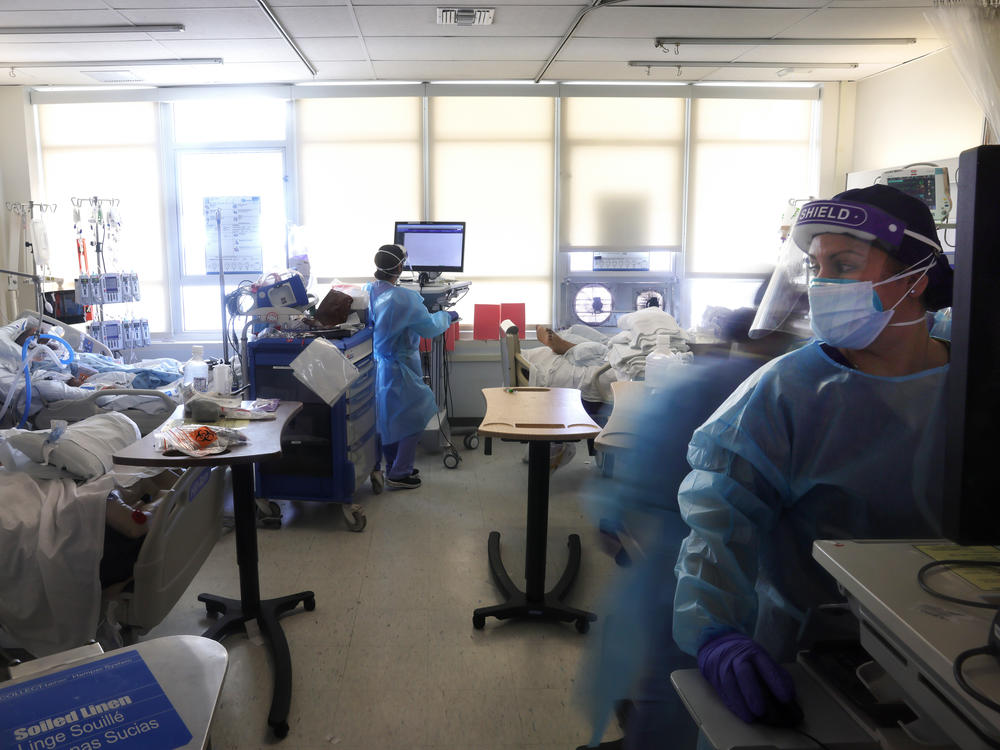Section Branding
Header Content
California Lifts Stay-At-Home Orders: 'Light At The End Of The Tunnel'
Primary Content
California is lifting stay-at-home orders for all regions in the state, including Southern California, the Bay Area and the San Joaquin Valley — the three regions that had still been under the order — citing a drop in intensive care unit projections. But health officials warn that most counties still need to follow strict guidelines.
"COVID-19 is still here and still deadly, so our work is not over, but it's important to recognize our collective actions saved lives and we are turning a critical corner," said Dr. Tomás Aragón, the state's public health officer and director of the California Department of Public Health.
More than 40 million people live in the 54 California counties where the state deems COVID-19 risk to be "widespread," according to the latest official assessment. Only four counties, with a population a bit more than 35,000, are currently in lower-risk tiers. Still, for many businesses, the new change is good news.
"The lifting of regional closures is welcome relief to restaurants that can resume outdoor dining, and businesses such as gyms, hair and nail salons that can now reopen with modifications," NPR's Eric Westervelt reported.
"But county and local officials can still maintain closures and other restrictions, as several are likely to do. Los Angeles County, in particular, remains in a tough spot despite a drop in new cases," he added.
California announced its regional stay-at-home order in early December, saying it would apply to any region where ICU availability is projected to fall below 15%. The Sacramento region exited the order earlier this month; the Northern California region was never affected by it.
California has emerged as a new epicenter in the COVID-19 pandemic in the U.S., reporting more than 3.1 million cases and nearly 37,000 deaths in its most recent bulletin. Well over half of the state's cases were found in people ages 18 to 49.
As COVID-19 patients overwhelmed emergency rooms, California recently took the extraordinary step of overriding its own law that puts a limit on the number of patients each nurse can be assigned to look after.
"California is slowly starting to emerge from the most dangerous surge of this pandemic yet, which is the light at the end of the tunnel we've been hoping for," said Dr. Mark Ghaly, secretary of the state's Health and Human Services Agency.
Ghaly credited Californians with heeding an "urgent message to stay home when possible," which he said helped to minimize a surge that many states expected to see after the holiday season.
California has been trying to boost its COVID-19 vaccination effort, which currently ranks as one of the worst in the U.S. in two key metrics.
The state has administered 2,199,908 vaccine doses – the most in the country. But that's far less than half the 4,906,525 doses it has received, according to the Centers for Disease Control and Prevention.
Per capita, the number of doses California received is on par with or higher than many other states. But its rate of doses administered per capita is much lower than in other highly populous states such as Florida, Texas and New York — and it's less than half the rates seen in the best-performing states.
Copyright 2021 NPR. To see more, visit https://www.npr.org.

